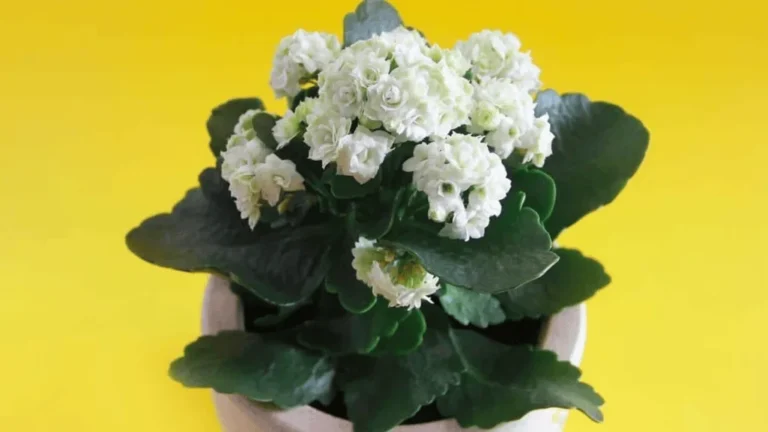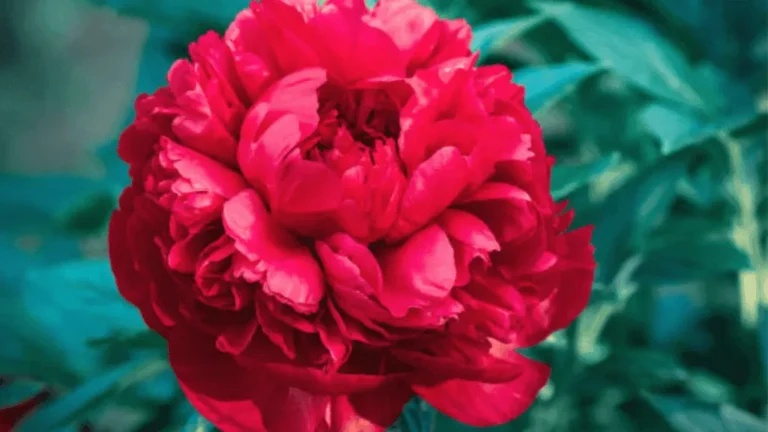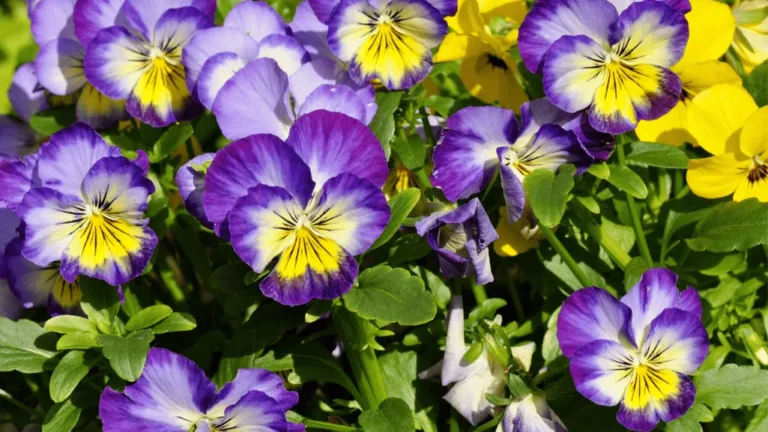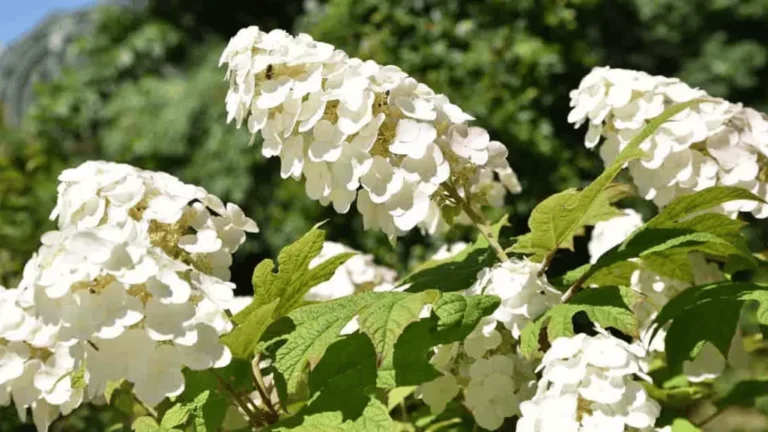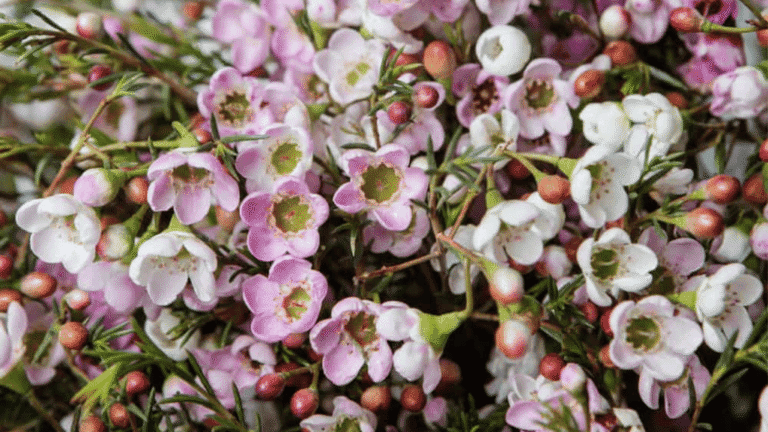Beautiful flowers gardenia Plants For Your homes

Freesias are a gardening delight, offering fragrant flowers and colorful petals. They brighten up any space. These exotic bloomers are from South Africa and are easy to grow.
They provide intoxicating scents and a variety of jewel-toned colors. Freesias are frost-tender perennials that grow from corms. This makes them great for winter blooms that can be forced indoors.
They also do well outdoors in garden beds or containers with proper planting. This adds aromatic blooms to your spring garden.
Looking to add color to your indoor space or create a fragrant outdoor oasis? Freesias are a great choice. They come in many colors, from classic white to vibrant yellow, orange, scarlet, pink, royal blue, and lavender, and even stunning bicolors.
With their long vase life and ability to tolerate partial shade, freesias are perfect for cut flower gardens and floral arrangements.
Key Takeaways
- Freesias are native to South Africa and are frost-tender perennials that grow from corms.
- They offer fragrant flowers in a wide range of colors, including white, yellow, orange, scarlet, pink, royal blue, lavender, and bicolors.
- Freesias can be forced indoors for winter blooms or planted outdoors in garden beds or containers for spring blossoms.
- These flowers are ideal for cutting gardens and floral arrangements due to their long vase life.
- Freesias can tolerate partial shade and are not preferred by deer and rabbits.
Introduction to Freesia
Freesia is a favorite among gardeners and florists for its bright colors and lovely smell. These beautiful flowers come from South Africa. They are loved worldwide for their beauty in gardens and in bouquets.
Native to South Africa
The freesia was first named in 1866 and includes about 20 types. These plants are from southern Africa, from Kenya to South Africa. They mainly live in the Cape Provinces, where they do well in the climate and soil.
The freesias we know today are hybrids of different Freesia species. These include Freesia andersoniae, Freesia caryophyllacea, Freesia corymbosa, and Freesia fergusoniae.
Frost-tender perennial that grows from corms
Freesias are perennials that can’t handle frost. In zones nine through ten, they grow year-round. But in colder areas, they need to be protected from frost.
In these areas, you should dig up the corms in the fall. Store them in a dry place at 60°F (15°C) over winter. Then, replant them outside when spring frost is gone.
| Hardiness Zone | Planting Time | Care Instructions |
|---|---|---|
| Zones 9-10 | Fall | Plant corms directly in the ground |
| Zones 3-8 | Spring, after last frost | Store corms over winter at 60°F (15°C), plant outdoors in spring |
Freesias are known for their bright, fragrant flowers. They bloom on one side of their stems, making them look beautiful. You can find them in many colors like white, yellow, red, and purple.
Their sweet smell, with hints of honey and mint, is why they’re often used in scented bouquets. They’re perfect for weddings, symbolizing purity and innocence.
Basics of Freesia
Freesias are loved perennial plants from South Africa. They are frost-sensitive and grow from corms. They thrive in USDA zones 9-10. In zones 3-8, they are grown as annuals or in containers that can be moved indoors during winter.
Plant Type and Origin
Freesias are herbaceous perennials in the Iridaceae family. They come from South Africa and adapt to the climate. They sprout in the fall, grow foliage in winter, and bloom from late winter to early spring.
These plants grow from corms, which store nutrients for growth and flowers.
Zones
In zones 9-10, freesias are winter hardy and can stay outside all year. They grow roots after planting, get taller in winter, and bloom in spring. But in zones 3-8, they don’t survive winter outside. They are grown as annuals or in containers moved to a protected spot in winter.
When to Plant
The best time to plant freesias depends on the zone and when you want them to bloom. In zones 9-10, plant them in the fall for spring flowers or in spring for summer blooms. In colder areas, plant them in the spring after the last frost or start them indoors and move them outside when it gets warmer.
For indoor planting, do it from mid-August to late October for flowers from January through April.
Flowering Period
Freesias bloom 10-12 weeks after planting, lasting about 110 to 120 days. They can stay in bloom for six weeks or more, offering a long time of colorful, fragrant flowers. The exact bloom time can vary by the type of freesia, growing conditions, and when you plant them.
Height
Most freesias are 12 to 24 inches tall, averaging 12-15 inches. Each stem supports six to twelve flowers, creating a beautiful display in gardens or arrangements.
Flower Colors and Characteristics
Freesias are famous for their bright colors, sweet scent, and long vase life. They are a top choice for cut flowers. They come in many colors, including:
- White
- Cream
- Yellow
- Orange
- Red
- Pink
- Mauve
- Lavender
- Purple
They also have bicolors, offering a wide range of colors for gardeners and flower lovers. Freesia flowers can be single or double-petaled, adding more beauty to the blooms.
| Flower Color | Petal Type |
|---|---|
| White | Single or Double |
| Yellow | Single or Double |
| Pink | Single or Double |
| Red | Single |
| Purple | Single |
| Bicolor | Single or Double |
Forcing Freesia Indoors
Freesia is a fragrant flower from South Africa that can bloom indoors without a chilling period. Unlike bulbs like anemones and daffodils, which need 6-17 weeks of cold, freesias can be planted in pots and bloom indoors. Forcing bulbs indoors like freesia and amaryllis skips the need for winter chilling.
Planting
To start, pick a 6-inch pot for five freesia corms. These corms are smaller than other bulbs, so you can fit more in one pot. Place them shoulder to shoulder, 1 inch deep, with the pointed end up. They start growing roots right away and need 6 weeks to root in a cool spot.
Soil
Use a well-draining potting soil mix for planting freesia corms. Adding perlite or sand helps with drainage and prevents the soil from getting too wet, which can cause corm rot.
Lighting and Temperature
Put the freesia pot in a cool, bright spot for 6 weeks to help the roots grow. Then, move it to a sunny windowsill or a room with bright, indirect light. This will help the plant grow and bloom well. Freesias need lots of sunlight to flower.
Watering
Keep the soil of forced freesia plants moist but not too wet. Water well after planting and keep it consistent. Don’t overwater, as this can cause corm rot and slow growth.
Fertilizer
Feed your freesia plants with a balanced fertilizer every two weeks after the first buds appear. Use a water-soluble fertilizer at half-strength to give them the nutrients they need without overwhelming them.
Staking
As the freesia plants grow, they might need support. Use thin bamboo stakes or tie the stems to a support to keep them upright and prevent them from falling.
| Plant | Chilling Period | Bloom Time after Planting |
|---|---|---|
| Freesia | No chilling required | 10-12 weeks |
| Amaryllis | No chilling required | 6-8 weeks |
| Paperwhite Narcissus | No chilling required | 3-5 weeks |
| Hyacinth | 10-14 weeks | 16-18 weeks (after 12 weeks of chilling) |
Aftercare
Freesias bloom in 10 to 12 weeks after planting indoors. They produce fragrant flowers that smell sweet and fruity. After they bloom, cut off the dead flowers to keep the plant looking neat and encourage more bulb growth.
Let the foliage die back naturally after the blooms fade. This helps the corms build energy for next year. Reduce watering and store the corms in a cool, dry place until you replant them in late summer or fall. With the right care, your freesia plants can brighten your home with their beauty and scent during the cold months. For more ideas on connecting with nature, check out Rabeya Khanom’s blog “Nature is a Life to see how nature inspires creativity and well-being.
Planting Freesia in the Garden
Choose a spot in your garden that gets full sun and has soil that drains well and is rich in organic matter. Plant the freesia corms 2 inches deep with the pointed end up. Keep them 2 to 4 inches apart. For a beautiful look, plant them in groups of one color.
Make sure to water freesias often during their growing season. Let the soil dry a bit between waterings to avoid corm rot. In zones 9 and warmer, plant them in the fall for spring flowers. In zones 3 to 8, bring them inside after they bloom and store them in a cool, dry spot until spring.
Use stakes to support the stems. Feed young freesias with liquid fertilizer every 2 weeks for strong growth and lots of flowers. Don’t prune them until their leaves turn yellow, wilt, and dry up.
| Planting Depth | 2 inches (5 cm) |
|---|---|
| Spacing | 2 to 4 inches (5-10 cm) apart |
| Sun Exposure | Full sun |
| Soil | Well-drained, fertile, rich in organic matter |
| Watering | Keep soil consistently moist, allowing slight drying between watering |
| Winter Care (Zones 3-8) | Dig up corms after blooming and store in a cool, dry place until spring replanting |
Follow these tips to enjoy the sweet scent of freesias in your garden. They bloom 10 to 12 weeks after planting. Plant bulbs at weekly intervals to keep the flowers coming. Consider growing them in containers for more flexibility in your garden.
Freesia as Cut Flowers
Freesias are a top pick for cutting gardens because of their sweet smell and long-lasting flowers. These flowers come from South Africa and have been used for cut arrangements since the 1800s. Their unique shape and elegant stems make them perfect for adding beauty to any arrangement or centerpiece.
Ideal for Cutting Gardens
Here are some tips for adding freesias to your cutting garden:
- Freesias take about 100-120 days to bloom, so plan your planting well.
- Yellow and white freesias are the most fragrant and last the longest.
- Cut the flowers when they’re still in bud, with the first ones just showing color. This way, they’ll last up to three weeks in a vase.
- Cutting freesia flowers often makes the plant produce more, so it’s great for ongoing blooms.
Extending the Life of Cut Freesias
To keep your cut freesias fresh for longer, follow these steps:
- Cut the stems at a 45-degree angle underwater to stop air bubbles from blocking water.
- Take off any leaves below the water to stop bacteria from growing.
- Put the vase in a cool spot, away from direct sunlight and drafts.
- Trim the stems and change the water every few days to keep them fresh.
- Use cut flower food packets in the water to give nutrients and make the blooms last longer.
| Freesia Color | Vase Life |
|---|---|
| White | Up to 3 weeks |
| Yellow | Up to 3 weeks |
| Orange | Up to 2 weeks |
| Red | Up to 2 weeks |
| Pink | Up to 2 weeks |
| Lavender | Up to 2 weeks |
| Purple | Up to 2 weeks |
By following these tips, you can enjoy the beauty and scent of freesias in your arrangements for weeks. They are a favorite among florists, brides, and event planners around the world.
Popular Freesia Varieties
The Freesia genus has a stunning array of colorful and fragrant varieties, with only 16 species. These come from two South African natives: F. refracta and F. leichtlinii. They grow 20-30cm tall, perfect for borders, containers, and cut flower arrangements.
Freesia alba
Freesia alba was introduced to Europe in 1878 by Dr. Friedrich Freese. It’s a highly perfumed variety with white, off-white, or cream-colored flowers. This variety is loved for its strong fragrance and delicate beauty.
Freesia ‘Oberon’
Freesia ‘Oberon’ stands out with its golden-yellow and orange to vermilion flowers. This variety adds a vibrant pop of color to any garden or floral display.
Freesia Single Bicolor
Single bicolor freesia varieties have a captivating contrast of colors within each flower. For example, some have reddish-orange petals and bright yellow throats. Others have lavender-blue petals with white accents and purple veining.
| Variety | Flower Color | Fragrance |
|---|---|---|
| Freesia alba | White, off-white, cream | Strong |
| Freesia ‘Oberon’ | Golden-yellow, orange, vermilion | Moderate |
| Single Bicolor | Reddish-orange & yellow, lavender-blue & white | Moderate to strong |
Freesia Single Blue
Single blue freesia varieties, like F. ‘Blue Moon,’ have a delicate mix of lavender-blue and white petals. They also have purple veining and bright yellow centers. These blooms add a soothing touch to the garden.
Freesia Double White
Double white freesia varieties, like the Freesia Soleil® Double, have creamy white, double-petaled flowers. They have golden throats and an exceptional fragrance. These varieties bloom in early spring and grow about 40 cm tall. They thrive in USDA zones 9-10.
Other notable freesia cultivars include F. ‘Red Lion’ with deep red, funnel-shaped flowers. F. ‘Red River’ presents bright red to lipstick red blooms with golden-yellow throats. F. ‘Golden Yellow’ is a cheerful variety with sunny yellow flowers. Freesias offer a wide range of colors, fragrances, and shapes for every garden enthusiast.
Buying Tips for Freesia Bulbs
When shopping for freesia bulbs, think about what you like and where you’ll grow them. Here are some important things to remember:
Single Colors or Coordinated Mixes
Freesia bulbs come in single colors or mixes of colors. Single colors give your garden or arrangement a uniform look. Mixes add a pop of color with different hues that work well together. Pick what fits your style and garden plan.
Preconditioned Corms for Forcing
For planting right away, choose preconditioned corms. These corms have already rested, which is key for growth and flowers. They’re perfect for making freesias bloom indoors or in places with short growing seasons.
| Corm Type | Dormancy Period | Ideal for |
|---|---|---|
| Regular Corms | Require dormancy | Planting in fall for spring bloom |
| Preconditioned Corms | Dormancy completed | Forcing indoors or shorter growing seasons |
Larger Corms for More Stems and Flowers
Go for larger freesia bulbs. They have more energy, leading to more stems and flowers. These bulbs are stronger and more likely to do well in different conditions. They cost a bit more but are worth it for the bigger blooms and health.
White or Yellow Blooms for the Best Scent
Freesias are known for their lovely smell, but not all types smell the same. For the best scent, pick bulbs that produce white or yellow flowers. These colors have the strongest smell, filling your space with their sweet fragrance. But, some people might not notice the scent because of how their noses work.
Thinking about these points when buying freesia bulbs will help you grow beautiful and fragrant flowers.
Growing Freesia in Greenhouses
Freesias are loved for their beauty and grow well indoors in cool, bright greenhouses. They come from South Africa and are part of the Iridaceae family. These plants are frost tender and grow from corms. With the right care, you can have freesias in many colors like white, yellow, orange, pink, red, and mixed colors.
Cool, Bright Conditions with Good Air Ventilation
To grow freesias in a greenhouse, you need the right conditions. They like cool, bright places with temperatures between 50-60°F (10-15°C). It’s important to have good air flow to stop humidity and diseases. Make sure your greenhouse has fans or windows that open to keep air moving.
Potting and Planting Depth
Use clean, draining soil when potting freesias to stop the corms from rotting. Plant the corms close together, about 2 inches apart, at a depth of 2 inches. This helps the roots grow strong and prevents waterlogging. For a 5-inch pot, plant 6 to 8 bulbs for a full look.
| Pot Size | Number of Bulbs | Planting Depth | Spacing |
|---|---|---|---|
| 5-inch pot | 6-8 bulbs | 2 inches (5 cm) | 2 inches (5 cm) apart |
Staking and Supporting Plants
Freesias can grow 15 to 24 inches tall, so they need stakes for support. Keep the pots in light shade until the plants are 2 inches tall. Then, move them to bright sunlight and put stakes around the pot. Wrap twine around the stakes as the plants grow to keep them upright and strong.
Watering and Sunlight Requirements
Watering freesias regularly is important for their success. Keep the soil moist but not too wet to avoid corm rot. Freesias need lots of sunlight to bloom well. Not enough sun or too much heat can cause fewer flowers or deformed blooms. Place your freesia pots in a sunny spot in the greenhouse, but protect them from the hottest part of the day.
By following these tips, you can enjoy a beautiful display of freesias in your greenhouse. With the right care, these flowers will bring you joy and beauty for a long time.
Troubleshooting Freesia Growth
Freesias are usually tough plants but can face growth problems. One issue is not blooming or having misshapen flowers. This often happens if they don’t get enough sunlight or if it’s too hot. Make sure they’re in a spot that gets full sun and stays cool, especially if they’re inside.
They do best with nighttime temperatures between 50 to 55°F (10 to 13°C). This helps them form buds without going into hibernation.
Another problem is corm rot from too wet or poorly draining soil. To avoid this, let the soil dry out a bit between waterings and make sure it drains well. Adding things like peat moss or compost to the soil helps with drainage. Water them once a week when they’re blooming, but let the soil dry out a bit if the leaves start to turn yellow and wilt.
Good care is key for healthy freesia growth. They usually bloom in spring or early summer when days get longer and the soil warms up. Giving them a phosphorus-rich fertilizer in spring helps them start blooming. Then, use a balanced fertilizer every two months while they’re growing. But, don’t overfeed them as it can stop them from blooming. Deadheading helps keep them looking good and encourages more flowers.
Pests and diseases can also hurt freesia growth. Aphids can make leaves and flowers twist or turn yellow. You’ll need to check on them every day to remove them. Slugs and snails can eat freesia plants at night, so you can pick them off by hand or use beer traps or diatomaceous earth.
Bacterial soft rot can cause spots on leaves, stems, or flowers that turn gray, black, or brown. If it gets worse, it can kill the plant. Fusarium wilt is a fungal disease that’s hard to cure and can kill freesia plants. Iris leaf spot shows up as yellow or green spots that get bigger, so you’ll need to move the plant to better soil and cut out the infected parts.
| Problem | Cause | Solution |
|---|---|---|
| Lack of blooming or malformed flowers | Insufficient sunlight or high temperatures | Plant in full sun and maintain cool temperatures (50-55°F at night) |
| Corm rot | Wet or poorly drained soil | Allow soil to dry slightly between watering and ensure proper drainage |
| Pests (aphids, slugs, snails) | Infestation | Remove pests manually or use traps and diatomaceous earth |
| Bacterial soft rot | Fungal infection | Remove infected tissues and improve drainage |
| Fusarium wilt | Fungal infection | Incurable; remove and dispose of infected plants |
| Iris leaf spot | Fungal infection | Move plants to better-draining sites and remove infected tissues |
By fixing these common problems and giving your freesias the right care, they’ll grow well and bloom beautifully every year. Keep an eye on them and act fast if you see any issues to keep them healthy and bright.
Companion Plants for Freesia
Freesias are magical in any garden, adding a sweet scent and slender leaves. They pair well with bulbs like hyacinths, tulips, and daffodils. Plant at least six freesia corms together to make their flowers pop.
Choosing the right plants to grow with freesias is key. Think about their height, spread, and needs. Here are some great options:
- Azaleas and Rhododendrons (height: 2-3 feet, spread: 3-5 feet, zones 6b-9)
- Phlox subulata and hybrids (height: 4-8 inches, spread: 18-24 inches, full sun, zones 3-8)
- Lungwort (Pulmonaria) (height: 12-16 inches, spread: 18-24 inches, zones 3-9)
- Brunnera macrophylla (Heartleaf Brunnera) (height: 12-18 inches, spread: 15-32 inches, part shade to full shade, zones 3-8)
- Blue Star (Amsonia) (height: 18-30 inches, spread: 32-42 inches, full sun to part sun, zones 4-9)
- Catmint (Nepeta) (height: 12-20 inches, spread: 18-36 inches, full sun, zones 3-8)
- Daylilies (Hemerocallis) (height: 20-34 inches, spread: 18-24 inches, full sun to light shade, zones 3-9)
- Hostas (Hosta) (various heights and spreads, part shade to full shade, zones 3-9)
Planting together isn’t just for looks; it helps with pests and growth. In rose gardens, herbs like parsley and dill keep aphids away. Cosmos and fennel attract good bugs that eat pests. Chives and garlic also keep pests off roses.
Think about adding perennials that match freesia’s beauty. Plants like clematis and fuchsia make the garden look great. Tall plants like foxgloves add drama, while lamb’s ear has lovely silver leaves.
Don’t forget about the smell of your garden. Freesias have a sweet scent, but add more fragrant plants like jasmine for more aroma. Choosing the right plants with freesias makes your garden beautiful and fragrant all season.
Conclusion
Freesias are a stunning addition to any garden or home, with their fragrant flowers and colorful blooms. They come from South Africa and are loved worldwide for their beauty and ease of care. These flowers bloom for 4 to 6 weeks in spring and summer, showing off a variety of colors like white, yellow, pink, purple, and red.
Each color has its own special meaning in the world of flowers. Freesias are easy to grow and maintain, whether in a garden or indoors. They need well-draining soil and lots of sunlight to bloom well. As cut flowers, they can last up to two weeks, making them perfect for bouquets and arrangements.
They are also a favorite for weddings, symbolizing love and affection. For more on protecting your privacy on flower websites, visit Flowers Gardenia’s Privacy Policy.
Scientists have studied the colors of freesia flowers and found interesting things. They discovered that certain compounds and genes help create the different colors we see. This research deepens our understanding and appreciation of these flowers.
In conclusion, freesias are truly special flowers, offering beauty, fragrance, and elegance. They can brighten up a garden or make a beautiful bouquet. Adding freesias to your life can bring joy and beauty.






